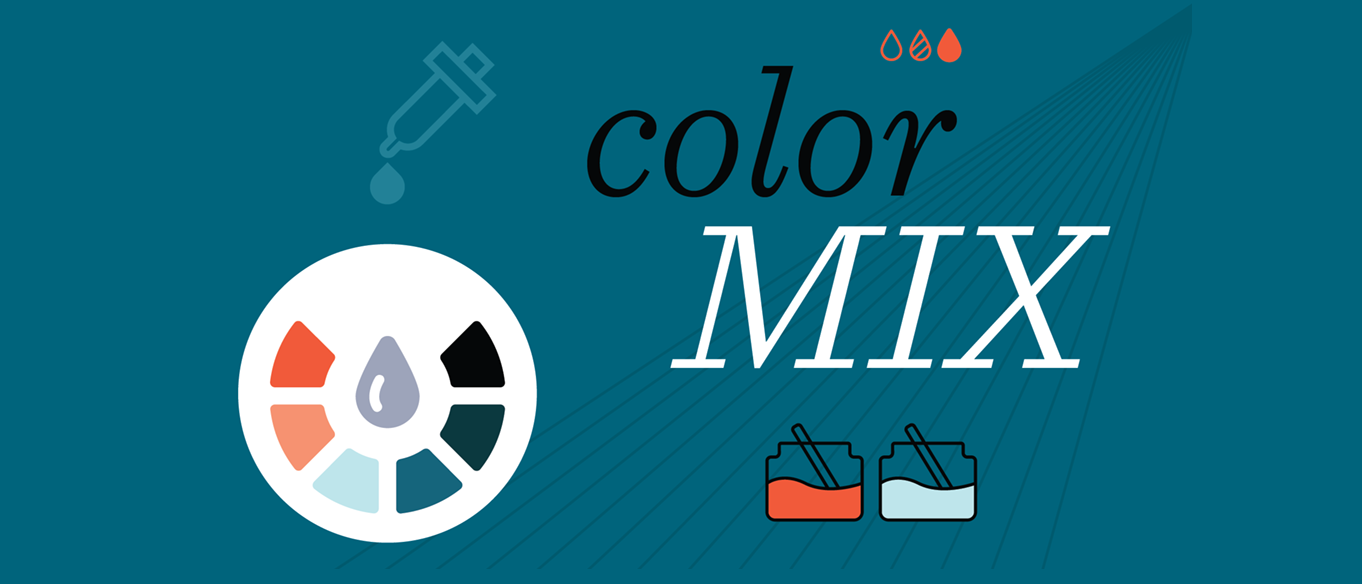
Whether you’re mixing chemicals, cookie dough, or crayon colors, the amount and order of ingredients—the formula—matters. Practice your formula-finding skills in this classic STEAM activity by mixing colored water in different amounts to discover an endless number of colors. How many color formulas can you invent?
Ages: 3-10
Time: 10-30 minutes
Keywords: colors, STEAM, color theory
What you need:
- White or clear containers with several separate “wells” for mixing, such as ice cube trays, plastic egg cartons, or small clear cups (12-24 “wells” per child)
- 3 medium-sized cups or small bowls
- Food coloring, three different colors
- Water
- 3 eye droppers, spoons, or straws
- White paper
What to do:
1. Fill the three medium-sized cups about half full of water; then add 3-4 drops of food coloring to each to make three different colors of water. Choose three colors that are pretty different from each other (like red/yellow/blue or pink/purple/orange). Put an eye dropper, straw, or spoon in each cup.
2. Practice carefully using your tools for transferring colored water out of the cup:
- If you are using an eye dropper, squeeze the rubber part before you put it in the water, then release once it's in the water. Pull it out of the water, then squeeze gently to allow the colored water to drip back out.
- If you are using a straw, hold the sides of the straw while you put it in the colored water, then press a finger on top of the straw while you bring it out of the cup. Don’t remove your finger until you are ready to release the water again.
- If you are using a spoon, put your colored water in a bowl instead so you can keep the spoon level after you dip it in the water.
3. If your mixing containers are clear, place a piece of white paper underneath them. The paper will make the colors of your mixtures easier to see.
4. Choose one color to start with and add a few drops to one of your mixing wells. Now choose another color and add a few drops to the same well, so the colors mix together. Remember to use a separate dropper, straw, or spoon for the second color so the mixing happens in your mixing well—not in the dropper or the cup!
5. Make some observations about what happened when you mixed the two colors. What color is your mixture? How does it look similar or different to the colors you started with?
6. Try a different combination of colors in the next well. How is this mixture different from your first one? What color did this formula create?
7. Continue to explore by mixing colors together in the wells. Think or talk about these questions as you go:
- How many different colors can you make?
- What happens if you use the same amount of each color?
- What happens if you use a lot of one color and only a little of the other?
- What happens if you mix all three colors?
- Can you make more than one kind of green (or purple, or other color)?
8. Other ideas to try:
- Make as many shades of the same color as you can.
- Write down the formulas for the different colors you create by counting how many drops of each color you used (for example: 32 blue, 13 yellow, 5 red). Record your formulas by putting a drop of the color onto a piece of white paper and writing the numbers of drops beside it.
- Name your favorite color creations, the way that paint or nail polish companies come up with their own unique names (like “robin’s-egg blue” or “razz-a-ma-dazzle”).
- Try the experiment again, but use three different colors as your starting colors.
9. Clean up by emptying the well plates into the sink and rinsing with water.
What’s happening?
There are three primary colors of pigment: red, yellow, and blue. If any two of those colors are mixed you can make the secondary colors of pigment: orange, green, and purple. If a primary color and a secondary color or two secondary colors are mixed, you can make tertiary colors. These tertiary colors have a variety of names like chartreuse, azure, violet, and rose.
When mixing colors there are multiple ways to vary the color. One of the easiest ways to create color variations is to create tints and shades. Here’s some vocabulary to describe your colors:
- A hue is a general color family (one of the six primary or secondary colors).
- A tint is a single color mixed with only white added to lighten the color.
- A shade is when you mix a single color with only black to darken the color.
- A tone is a single color mixed with gray (a mixture of only black and white).

